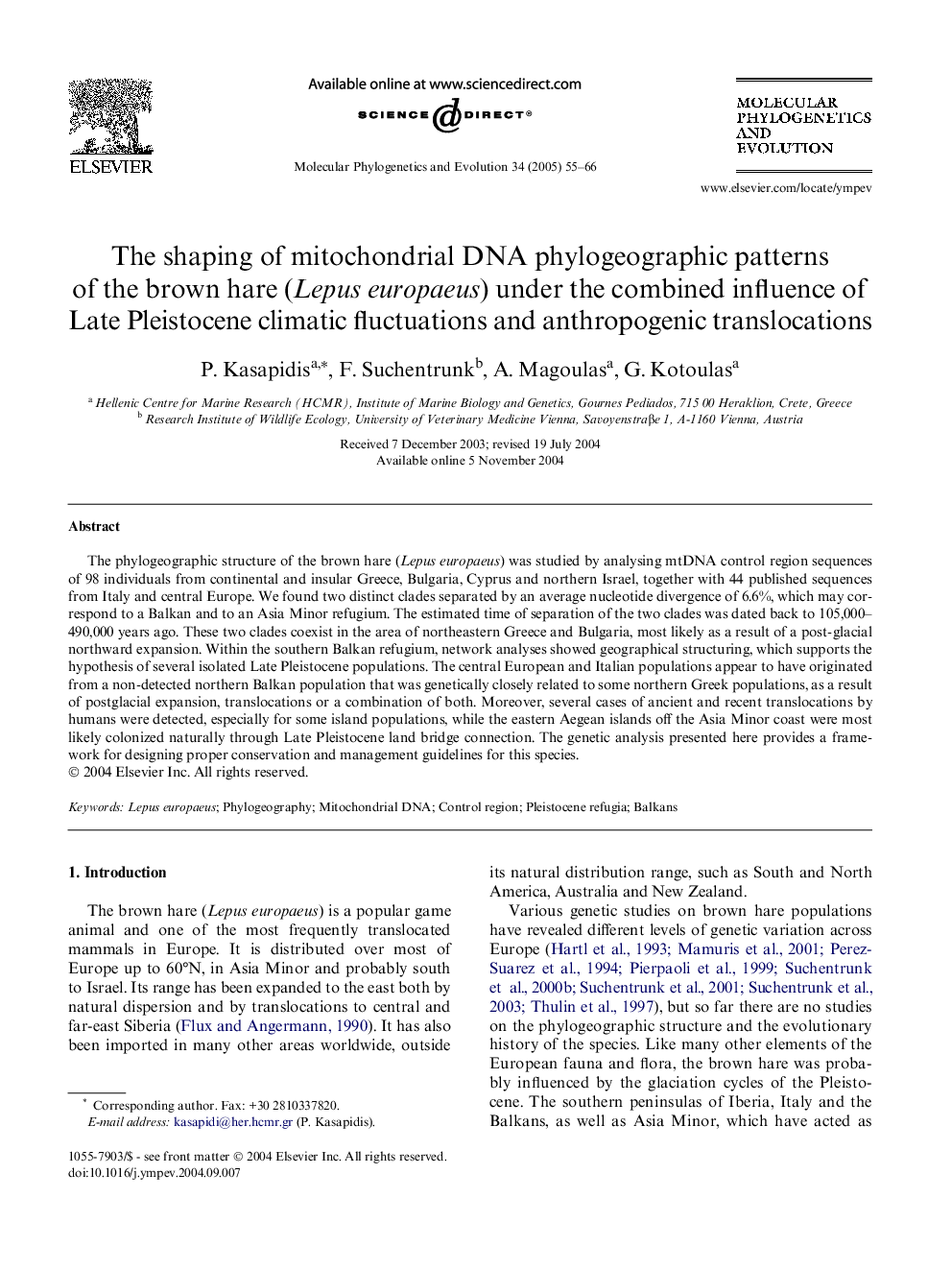| Article ID | Journal | Published Year | Pages | File Type |
|---|---|---|---|---|
| 9142883 | Molecular Phylogenetics and Evolution | 2005 | 12 Pages |
Abstract
The phylogeographic structure of the brown hare (Lepus europaeus) was studied by analysing mtDNA control region sequences of 98 individuals from continental and insular Greece, Bulgaria, Cyprus and northern Israel, together with 44 published sequences from Italy and central Europe. We found two distinct clades separated by an average nucleotide divergence of 6.6%, which may correspond to a Balkan and to an Asia Minor refugium. The estimated time of separation of the two clades was dated back to 105,000- 490,000 years ago. These two clades coexist in the area of northeastern Greece and Bulgaria, most likely as a result of a post-glacial northward expansion. Within the southern Balkan refugium, network analyses showed geographical structuring, which supports the hypothesis of several isolated Late Pleistocene populations. The central European and Italian populations appear to have originated from a non-detected northern Balkan population that was genetically closely related to some northern Greek populations, as a result of postglacial expansion, translocations or a combination of both. Moreover, several cases of ancient and recent translocations by humans were detected, especially for some island populations, while the eastern Aegean islands off the Asia Minor coast were most likely colonized naturally through Late Pleistocene land bridge connection. The genetic analysis presented here provides a framework for designing proper conservation and management guidelines for this species.
Related Topics
Life Sciences
Agricultural and Biological Sciences
Ecology, Evolution, Behavior and Systematics
Authors
P. Kasapidis, F. Suchentrunk, A. Magoulas, G. Kotoulas,
